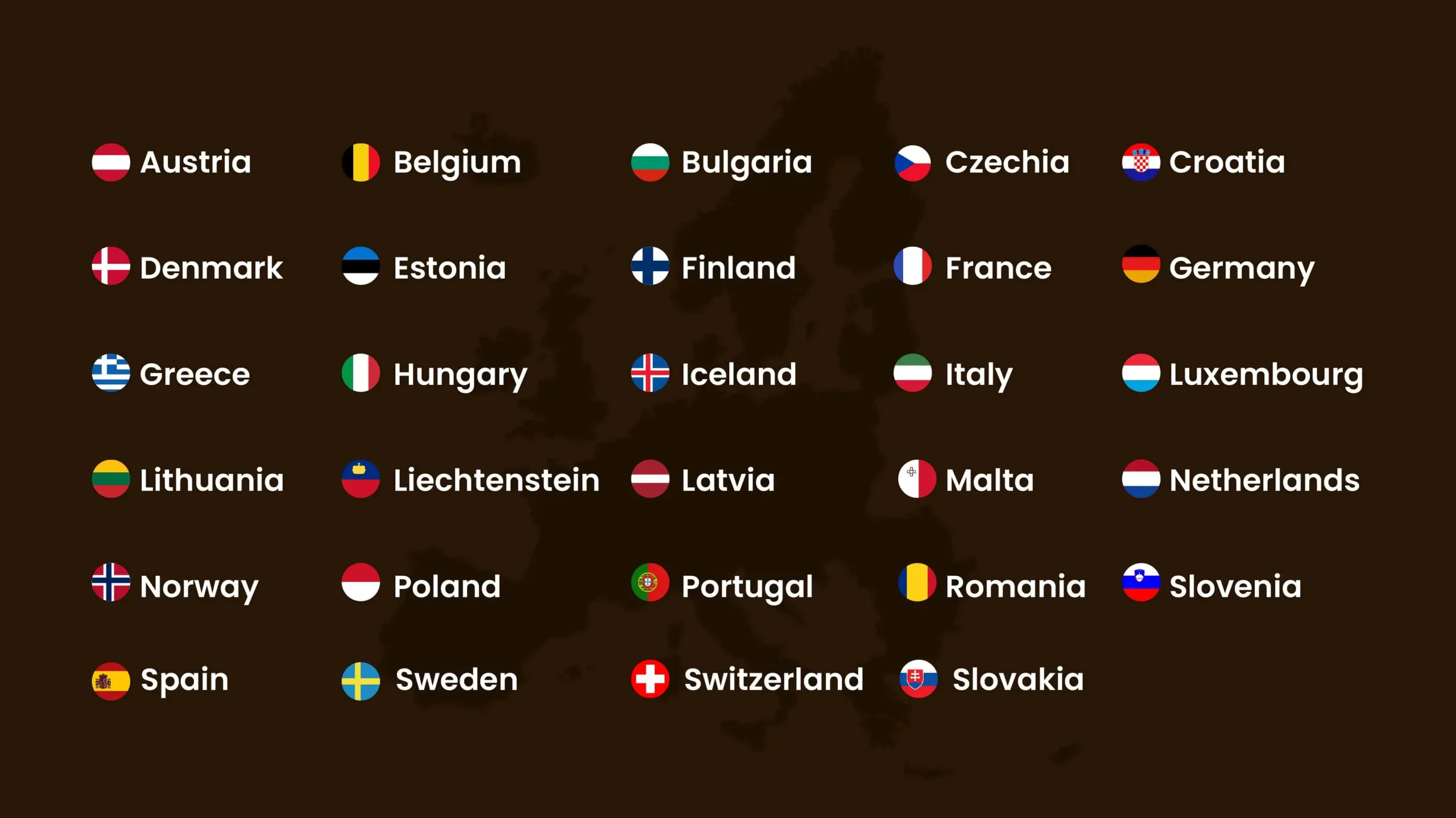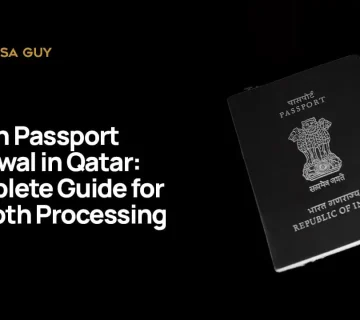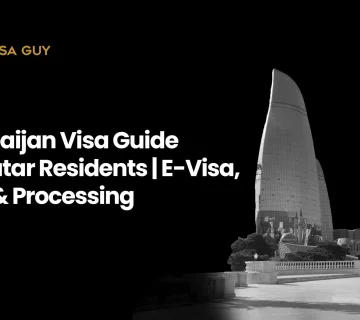The Schengen Area is a group of 29 countries that make travel easier with a single visa. This means no additional visa or entry permit is needed to travel between the borders of these countries.
If you are someone from Qatar planning to travel between Schengen countries or are interested in learning about the history of the Schengen Area, this guide is for you.
Here, you will find:
- What the Schengen Area is
- A list of Schengen countries
- The difference between Schengen and non-Schengen countries
- How to travel between them
- Travel tips for travelers from Qatar to the Schengen Area
Shall we delve into the topic? Let’s go!
What are Schengen Countries?
According to Wikipedia The Schengen Area includes 29 European countries that have removed border checks between each other. It works like a single region with shared rules for visas, making travel easier for people from outside the area. This system is part of the European Union’s efforts to promote freedom, security, and justice. The area is named after the Schengen Agreement (1985) and the Schengen Convention (1990), both signed in the town of Schengen, Luxembourg.
If you are traveling from Qatar to the Schengen Area and want to explore its diverse cultures, landscapes, cities, and historical charm, you will need to cross different borders to fully experience everything it has to offer.
The Schengen Agreement
The history of Schengen countries highlights the Schengen Agreement, a treaty signed in 1985 in Schengen, Luxembourg. It established the creation of a common area without internal borders.
The agreement was gradually implemented, with the full implementation of the Schengen Area occurring in 1995.
The Schengen Agreement aims to create a borderless region for the free movement of people, goods, and services across participating countries.
- It allows citizens and tourists to travel easily within the Schengen Area.
- Internal border controls are abolished to promote seamless travel.
- Schengen countries focus on strengthening external borders for security and immigration control.
- The agreement is believed to boost economic growth and trade.
Here is the list of countries that come under the Schengen Area.
List of Schengen Countries
Here’s a list of the 29 Schengen countries:

Are you excited to know the top 10 Schengen countries from Qatar? Here is the list—check it out!
Schengen vs Non-Schengen Countries
The idea of free movement in Europe started as a way to let people work, travel, and live freely in any EU country. However, it didn’t fully remove border checks between countries in the Union.
Joining the Schengen Area is not just a political decision. Countries must meet key requirements, including:
- Following Schengen rules for border controls, visas, police cooperation, and data protection.
- Managing external borders and issuing uniform Schengen visas for all member countries.
- Working closely with other Schengen countries to maintain security after removing internal borders.
- Using the Schengen Information System (SIS).
Countries must pass evaluations to show they meet these standards. Once approved, all current Schengen members must agree for the country to join.
These are the formalities for becoming a Schengen country. However, travelers often have questions and concerns, such as how to travel between Schengen and non-Schengen countries. Here is the answer.
How to Travel Between Schengen and Non-Schengen Countries
Traveling from a Schengen country to a non-Schengen area can be done in a few simple steps:
- Check visa requirements: Find out if you need a visa for the non-Schengen country you’re visiting. You can usually find this information on the embassy or consulate website of that country.
- Book your travel: Once you know the visa requirements, book your flights or other transportation to the non-Schengen country.
- Go through border control: When you arrive at the border between the Schengen country and the non-Schengen country, you’ll need to go through border control. Be prepared to show your passport and visa (if required).
- Enjoy your trip: Once you’ve cleared border control, you’re free to explore the non-Schengen country!
Traveling Schengen Countries from Qatar
If you are planning to visit the Schengen Area from Qatar and are not eligible for a Schengen visa exemption, you need to apply for a Schengen visa from Qatar.
Please remember to apply at least six months in advance. Ensure you have all the required documents ready. Complete the application process and schedule an appointment at VFS.
If you want more details about the requirements for a Schengen visa from Qatar, you can read about it here. For any kind of Schengen visa assistance, contact us to get expert guidance at every step.
Yes, if you have decided to travel to the Schengen Area, these travel tips may be very helpful for you.
Read them carefully.
Travel Tips for Qatar Residents Visiting Schengen Countries
- Plan Ahead: Book flights and accommodation in advance, especially during peak season.
- Check Visa Requirements: Ensure you meet all the visa requirements and apply well in advance of your trip.
- Travel Insurance: Purchase comprehensive travel insurance that covers medical emergencies, trip cancellations, and lost luggage
- Pack Light: Pack light and carry only essential items to avoid excess baggage fees.
- Learn Basic Phrases: Learn a few basic phrases in the local language of the country you are visiting.
Important Checks
- Passport Validity: Ensure your passport is valid for at least three months beyond your intended stay.
- Travel Documents: Keep all travel documents, including your visa, passport, flight tickets, and travel insurance, in a safe and easily accessible place.
- Currency Exchange: Exchange Qatari Riyals for Euros or the local currency of the country you are visiting.
- Mobile Data Plan: Check with your mobile phone provider for international roaming plans or purchase a local SIM card upon arrival.
Do’s and Don’ts
- Do: Respect local customs and traditions.
- Do: Be aware of your surroundings and take precautions against petty theft.
- Do: Carry a photocopy of your passport and other important documents separately from the originals.
- Don’t: Overpack.
- Don’t: Carry illegal substances or items.
- Don’t: Drink and drive.
- Don’t: Litter.
Conclusion
Traveling to the Schengen countries can be a rewarding experience. By following these tips and having a visa expert by your side, you can ensure a safe and enjoyable trip.
Dear Qatar residents, it is your opportunity to explore the diverse cultures, stunning landscapes, and rich history of the Schengen countries. With proper planning and preparation, your European adventure will be unforgettable.
FAQ
1. Which Schengen country is easiest to get a visa from Qatar?
There isn’t one single “easiest” country. Visa approval rates vary. However, countries like Iceland, Switzerland, Latvia, and Italy generally have lower rejection rates for Qatari applicants.
2. How long does it take to process a Schengen visa from Qatar?
The standard processing time is typically 15 calendar days. However, it can take longer during peak travel seasons or if additional documents are required by the embassy.
3. Can Qatari nationals travel to Schengen countries without a visa?
NO, Qatari citizens need a visa to visit Schengen countries. They can typically stay for up to 90 days within 180 days.
4. How much does a Schengen visa cost in Qatar?
The standard visa fee is usually 80 euros (approximately 310 Qatari Riyals). However, there might be additional service charges levied by the visa application center.
5. What are the documents required for a Schengen visa?
The essential documents generally include:
- A completed and signed visa application form
- A valid passport with sufficient validity
- Two recent passport-sized photographs
- Proof of travel medical insurance
- Confirmed flight tickets for entry and exit from the Schengen Area
- Proof of accommodation during your stay
- Evidence of sufficient funds to cover travel and living expenses
- Documents related to your employment or studies
- Copies of previous visas (if applicable)





